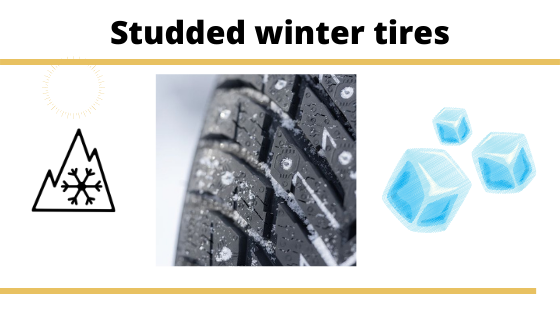Driving in Central Europe during the winter requires that you have adequate tyres for the region. Even if you are just traveling through Germany or Poland to another country, you are not allowed to cross if you have studded winter tyres. This will be major problem when traveling between two countries that allow it, but you need to cross through Germany or Poland to get to that country. Driving around might lead to a large deviation. Both Germany and Poland, have banned studded tyres so you need to have winter tyres without studs during the winter. If the police stop you with studded tyres, you will be fined and prohibited from continuing driving until you have changed your tyres. This will cause you major delays and add a lot of costs to your trip.
According to most legislation, if you don’t have snow or ice, you can manage with summer tyres. It is safer to change to tyres that are dedicated and thus designed for winter. You should therefore change as soon as the temperature drops below zero degrees, as that is when the winter tyres outperform summer tyres. In Germany and Poland, you two tyre options. One option is to change from summer tyres to winter tyres as the cold weather approaches and then back to summer tyres at the end of the cold season.
The other option is to go for all-season tyres which you can use both during the summer and the winter. This allows you to drive safely every day regardless of the weather. This is perfect for your family car, where you want to have optimal safety whenever you are driving. You might, however, not want to put these on your sports car, or if you do, you probably want to change them during the summer to ultra-high performance summer tyre. This allows you to get the most out of your sports car in terms of performance. If you don’t drive your sports car during the winter or are ok with not driving it when the weather is bad, you can just keep the summer tyres on.
If you live a location with a lot of snow and a long winter season, it is advisable to alternate between summer and winter tyres depending on season to ensure that you have the best performance during the winter and summer seasons. Tyres are so important for driving safety that it is always best to have the optimal tyre option mounted on your car.
With studded tyres you need to first drive a bit cautiously the first 500km, to allow the studs to set. You should then inspect the tyres to ensure that there is not more than 25% difference in the stud density between the tyres. Visit a tyre expert if you are unsure and you feel that you don’t have the sufficient grip that you would expect with studded tyres.
For more information regarding winter tyres for Poland and Germany, visit: https://www.nokiantyres.com/
